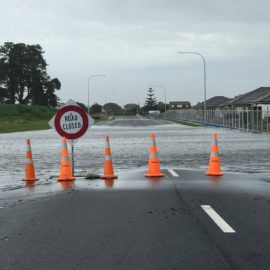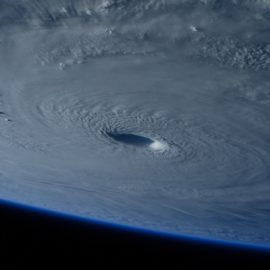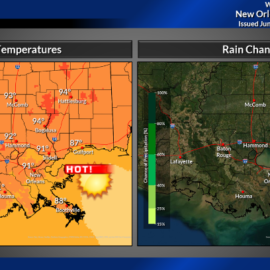
Twitter has a weather feed that may dry up.
The National Weather Service has used Twitter for years to quickly get out life-saving warnings about tornadoes, hurricanes and other weather threats. But last week, NWS officials were told that their automated tweets won’t be allowed as of the end of the month unless they start paying for the service. The agency, which includes the National Hurricane Center and more than 100 weather bureaus across the U.S., said it will now have to pay at least $100 a month for each forecast office’s account to allow automated updates. Those accounts, plus those that tweet in other languages and provide other emergency alerts, could add up to hundreds of thousands of dollars a year. On Friday, the weather service got its first taste of what the new policy could mean when automatic messages were blocked from being posted by several local forecast offices. Accounts used by the Slidell and Shreveport National Weather Service Offices posted “pinned” tweets on their Twitter accounts warning of the new policy: “Twitter announced on 3/29/23 that it will begin limiting automated tweets. Should this implementation occur, the automated watch/warning/advisory graphics shared on this account may not be posted. Have multiple ways to receive weather information and alerts,” read the notification on the Slidell office’s page.
nola.com
Twitter says they are cleaning up. Users say otherwise.
New York City’s Metropolitan Transit Authority got a similar first look at the new policy on Friday, when tweets announcing routine updates to subway and bus schedules unceremoniously disappeared. The new policy for use of Twitter’s “Application Programming Interface” or API, service that allows automatic transmission of tweets, will limit the number of automated tweets to 50 in a 24-hour period by any individual account. “Yeah, free API is being abused badly right now by bot scammers & opinion manipulators. There’s no verification process or cost, so easy to spin up 100k bots to do bad things,” Musk said in a Feb. 2 tweet announcing the new policy. “Just ~$100/month for API access with ID verification will clean things up greatly.” The new policy represents one of many attempts by billionaire Elon Musk to revamp the company since his purchase of it last year. Federal, state and local agencies using the service were apparently told last week that the new policy would apply to them. Pricing levels posted online on March 29 provide options described as “basic,” for $100 a month, and “enterprise,” with higher, negotiable rates that allow more individual tweets per month.
NWS is not a bot. Nor is NYC. THis is what the NWS provided.
Severe weather outbreaks, including tornadoes, hurricanes, snow storms and wildfires, often result in local weather service offices going well past the limit of 50 automated tweets in 24 hours. In the event of a major earthquake, the NWS Tsunami Warning Service office can issue more than 50 individual tweets aimed at locations around the globe that might be affected by damaging tsunami waves. Many offices, including the Slidell office, also make use of the University of Iowa’s Iowa Environmental Mesonet service, which provides an automatic “bot” repeat on Twitter of local weather service messages, including warnings, that also often total more than 50 per day. In a prepared statement Monday, the National Weather Service warned that Twitter’s policy change threatens to delay tweets about emergencies issued by its individual offices. “Without this automated process, it would take minutes for forecasters to manually prepare warning information into a tweet. For every warning issued, seconds could make the difference between life and death,” said Susan Buchanan, director of public affairs for the weather service. “Twitter informed NWS there are no plans for exemptions.”
NWS is not going to pay.
Buchanan’s statement called social media posts “a supplemental service” that could “extend the reach of weather forecasts and information,” and said that people should seek more than one method to follow emergency weather forecasts. She didn’t say if the weather service planned to pay Twitter. According to the NWS, it has used Twitter’s API service to automate warnings since 2014. There are more than 150 weather-related offices across the country with hundreds of thousands of followers. At the rate tweeted by Musk, the bill could be close to $200,000 a year, not including the University of Iowa weather bots and accounts used by non-weather forecast centers, which could double that cost. But on Monday, Bloomberg News reported that Twitter planned on charging as much as $42,000 a month for accounts used by business and government agencies in an article about the New York transit system, and said the system’s bill might total $500,000 a year. Twitter did not respond to requests to comment on the new policy or the National Weather Service’s complaints.
I will never buy a Tesla. I will not buy a Tesla battery when I get solar. I am glad I do not use Twitter.



